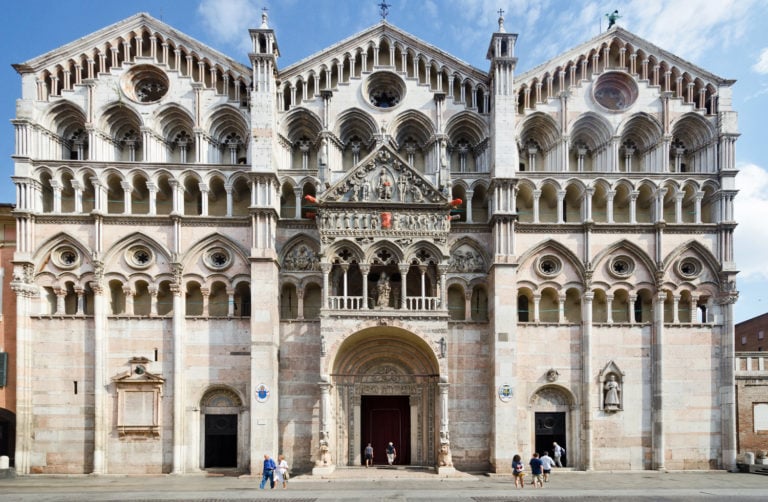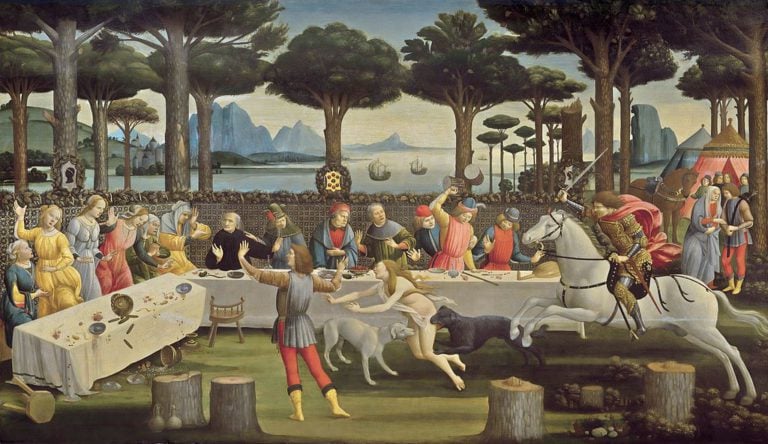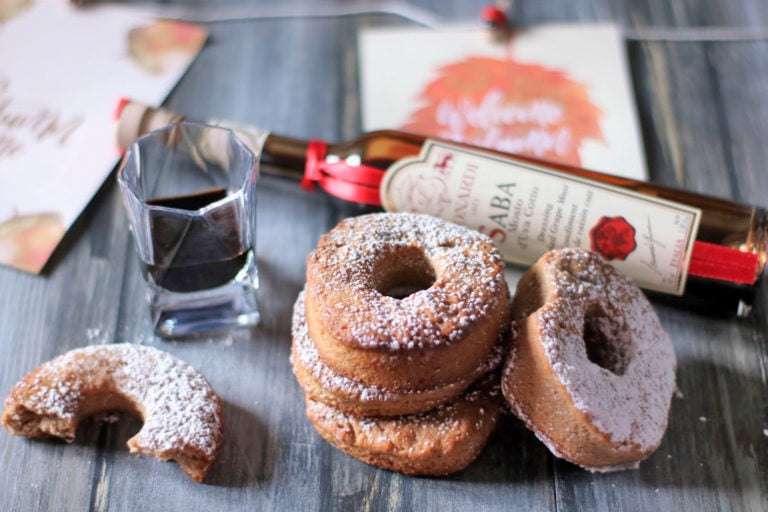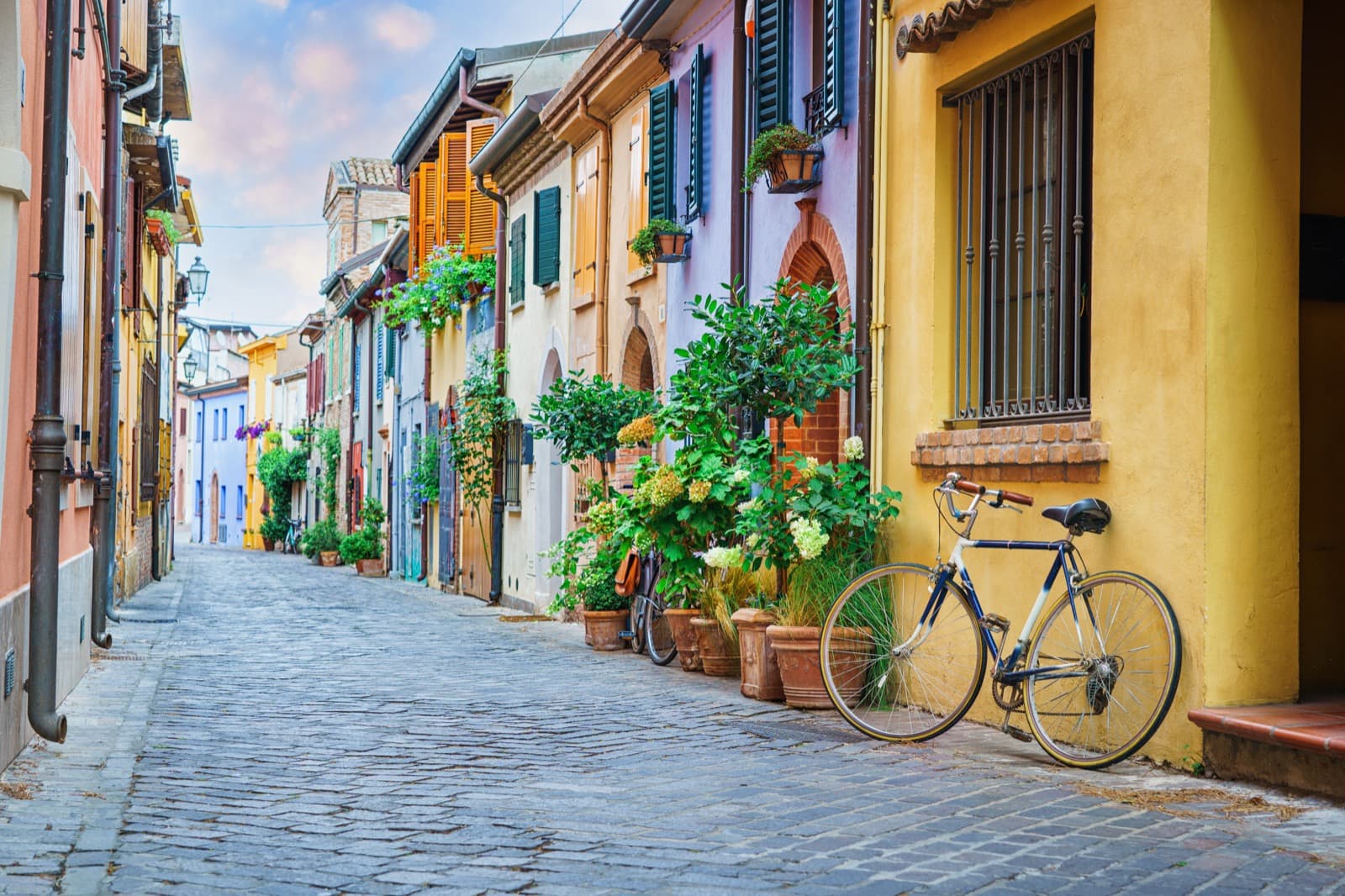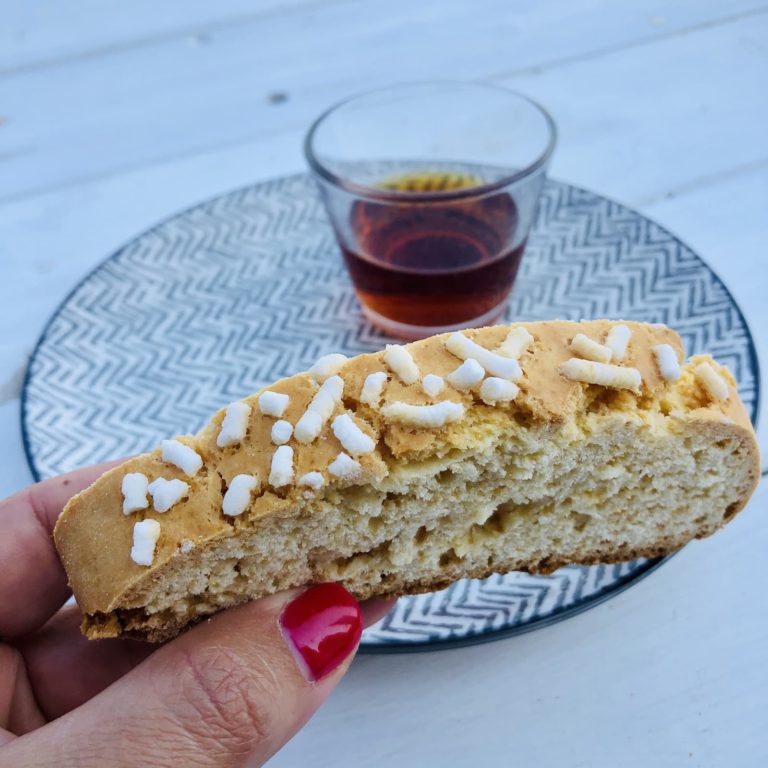Lying for centuries on the tables of the city of Ferrara, the Pampapato (or Panpepato) is undoubtedly one of the most traditional desserts in Emilia-Romagna.
The ancient origins, poised between legend and history, make this small circular-shaped delight a culinary treasure that goes beyond regional borders, ranking as one of the top Italian flavours.
It is no coincidence that it is also found in other typical Italian menus, such as in Siena, where it is called Panforte Nero di Siena (or Panpepato).
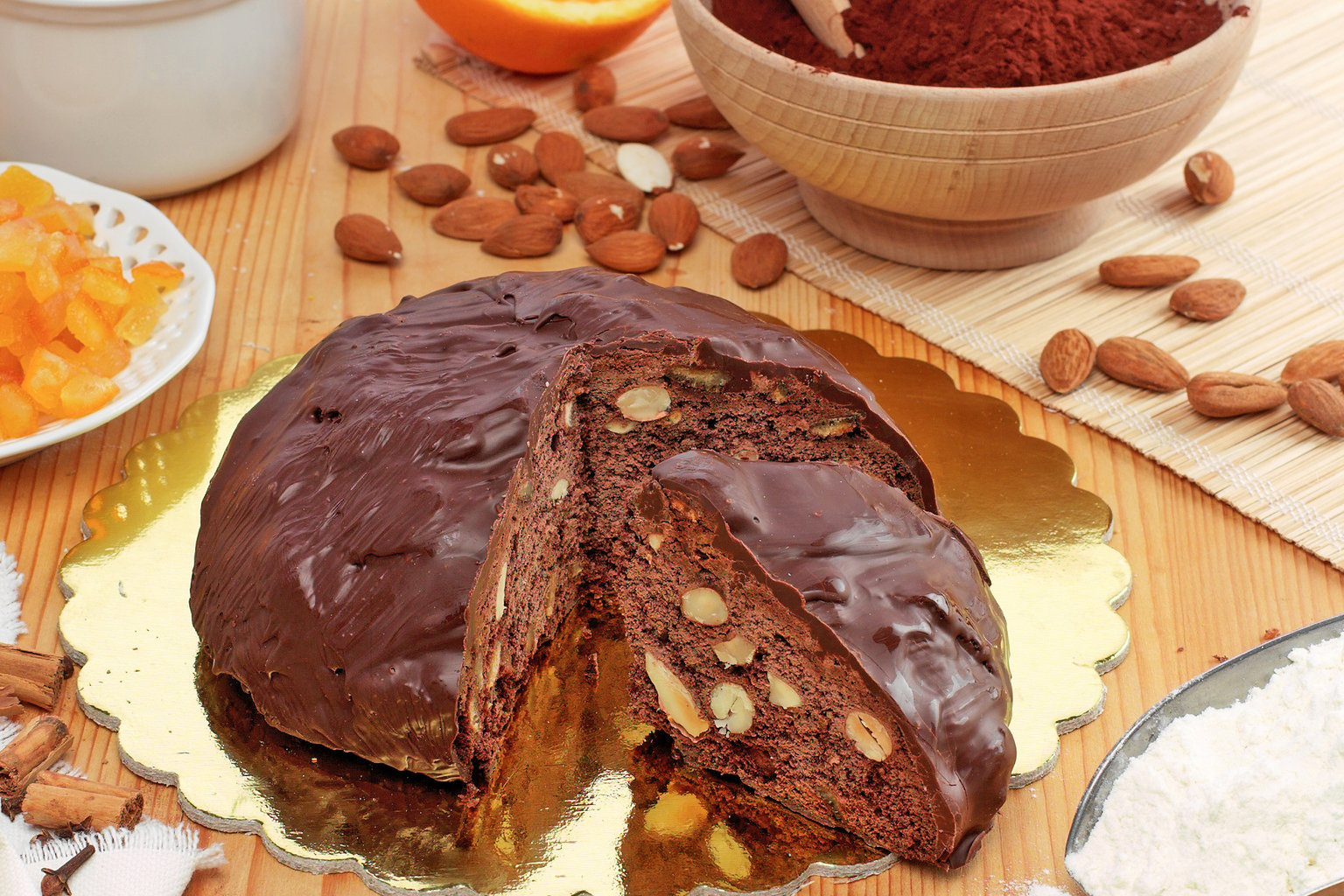
In the holiday season, it is difficult not to find it in the homes of Ferrara, especially as a dessert served for Christmas, but it is gradually ever more present even in other times of the year.
At the origins of Pampapato
Sugar, flour, honey, almonds, pine nuts, candied fruit and spices of various kinds (such as cinnamon, cloves, and nutmeg) are the key ingredients of this noble recipe, which is even more delightful with an extra dark chocolate topping above.
A few tasty ingredients give Pampapato a light softness in the dough (it is in fact one of the few fat-free cakes: no eggs, milk, butter, oil or lard), mixed with the chocolate flavour and the aroma of spices.
However may vary its name ― Pan del Duca, Pampapato, or Panpepato ― which has been even a discussion topic in the past, it is plausible that the origin of this dessert stems from the Renaissance between the end of the 16th century and the beginning of the 17th century.
In the Cloister of Corpus Domini, located in the ancient district of San Romano in Ferrara, the Poor Clares were renowned for the artistry with which they juggled in the kitchen.
Tradition has it that they not only used to send spiced bread to the high prelates for Christmas, but they also served it at the Este court.
When Ferrara became a territory of the Papal State, the dessert turned its name from Pan del Duca (Duke’s bread) to Pan del Papa (Pope’s bread, hence the name “Pampapato”).
Moreover, it changed its aspect, taking on a shape very similar to that of the ecclesiastical skullcap (zucchetto): it was of such a tastiness that it was considered worthy of a pope!
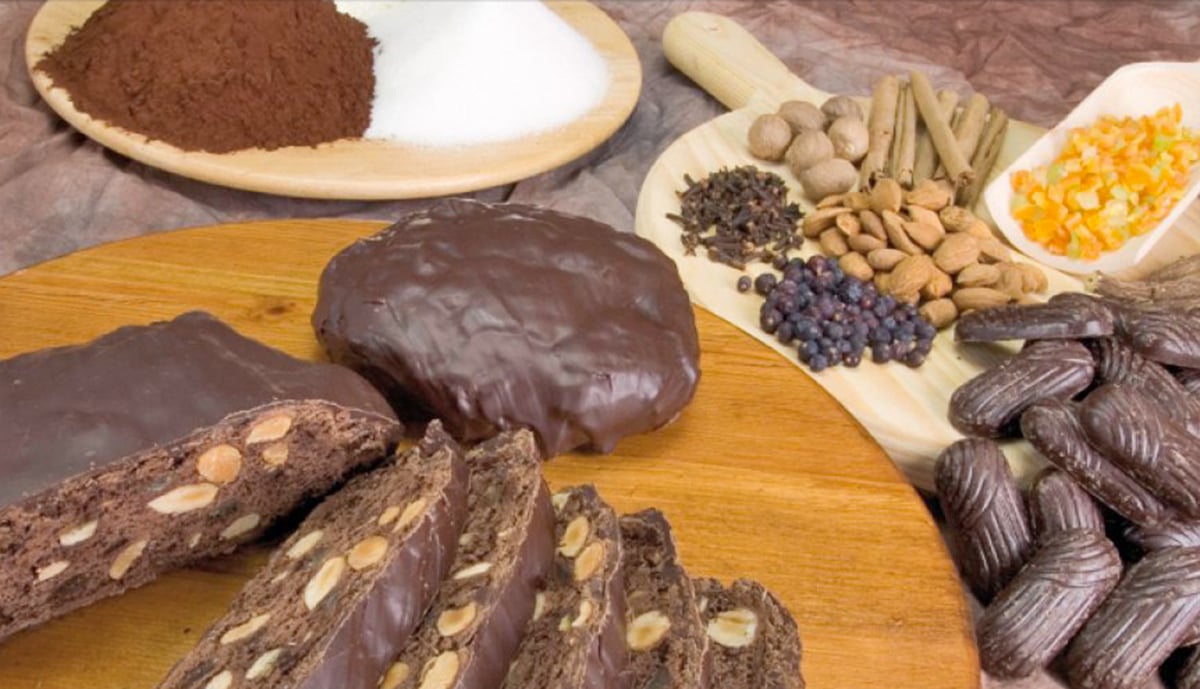
In the 16th century, cocoa powder was very rare and for this reason, seldom used in large quantities.
Therefore only in 1902, a pastry chef from Ferrara decided to cover the spiced bread with chocolate, ensuring its success, and in a short time became the undisputed symbol of Ferrara.
THE RECIPE
The old recipe was with flour, water, honey (later replaced by sugar), cocoa, ginger and cinnamon (no longer used today), pieces of candied fruit (candied peel of an orange, lemon and cedar), sweet toasted almonds with peel and a pinch of salt. It was cooled on a marble surface, “seasoned” in the mist, and finally covered with chocolate.
Today, the certification IGP (Protected Geographical Indication), strongly asked by the manufacturing companies of Ferrara, regulates the ingredients, production, look and flavour of this dessert.
Nevertheless, bakeries and pastries in the city have a certain room for variations, which guarantees the originality of taste.
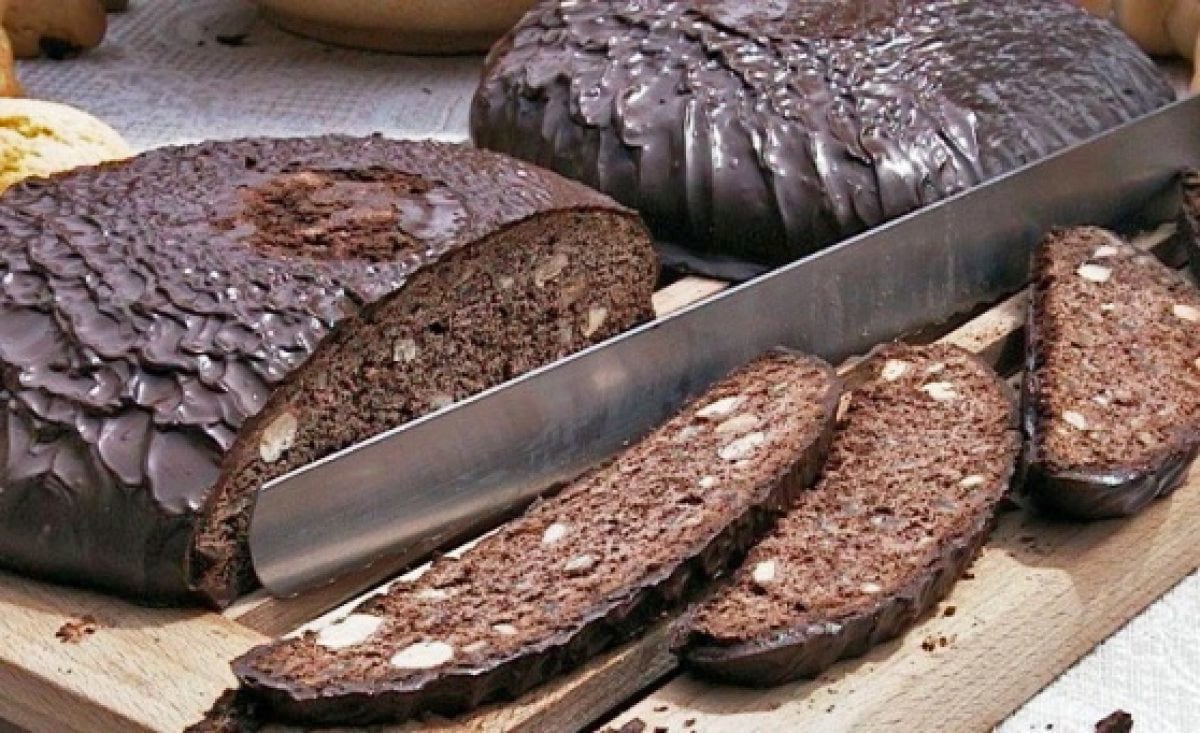
INGREDIENTS
- Soft wheat flour type “0”: 200 gr.
- Sweet toasted almonds with peel: 100 gr.
- Granulated sugar (or honey): 100 gr.
- Cocoa powder (22-24% cocoa butter): 100 gr.
- Candied fruit (candied orange, lemon and cedar peel): 100 gr
- Cinnamon powder: 2 gr.
- Nutmeg / chopped cloves: 2 gr.
- Dark chocolate for the covering: 80 gr.
METHOD
Toast for a few minutes the almonds, and then chop them coarsely. Cut the candied fruit into cubes. Add cinnamon and nutmeg (or cloves) and stir until combined.
Put the flour on the work surface and form a well in the centre. Add in the centre sugar or honey (of your choice), cocoa powder, and finally the mixture of spices and candied fruit. Stir the dough for about 35-45 minutes, adding water if needed, until you obtain a solid and homogeneous compound.
Divide the dough making several little portions. Shape them into little domes. Bake in a preheated oven at 160° for about 1 hour and 15 minutes.
Let the pieces (Pampapati) cool. Cover the Pampapati with abundant melted dark chocolate. Enjoy your dessert!
Author

Davide Marino
Davide Marino was born archaeologist but ended up doing other things. Rational – but not methodic, slow – but passionate. A young enthusiast with grey hair
You may also like
Ferrara in 3 minutes: Best Things to Do and See
by Davide Marino /// December 7, 2017
What to Eat in Ferrara
by Walter Manni /// May 23, 2018
Dalla Saba al Sàvor, da uno sciroppo a una marmellata
by Davide Marino /// April 15, 2020

Interested in our newsletter?
Every first of the month, an email (in Italian) with selected contents and upcoming events.
by Davide Marino ///
Ciambella Romagnola: Traditional Sweet Cake from Romagna
by Fede’s Food Blog /// September 16, 2020
